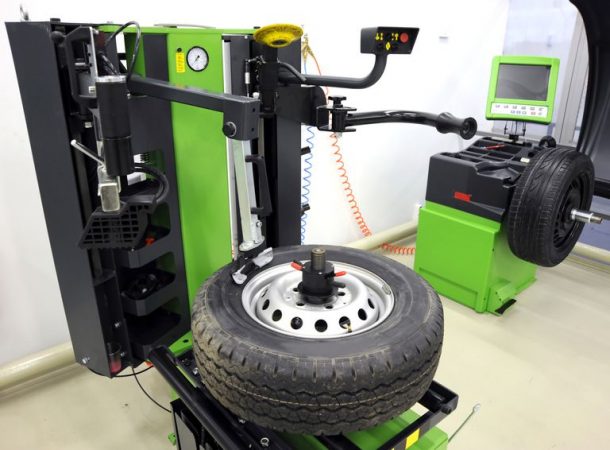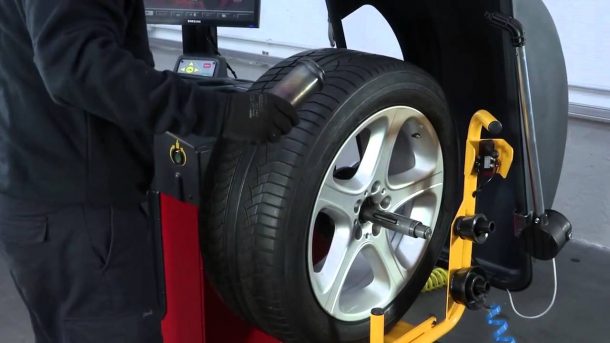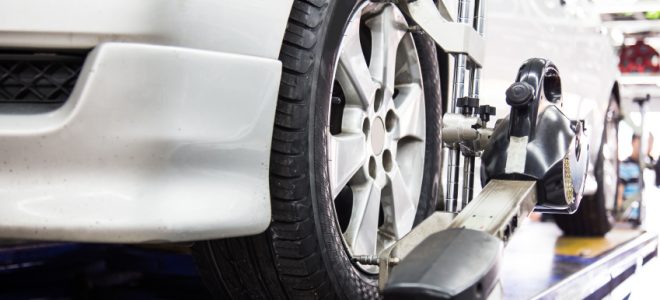Wheel balancing is a vital process to operating a motorized vehicle out on the road safely and reassuringly. Aside from general alignment and the use of quality tires, wheel balancing serves a purpose for stability and control while driving. By examining the process of wheel balancing, effects along with the outcomes, it will become clear as to why wheel balancing should never be neglected and should always be performed when purchasing or maintaining present tires.

Source:meineke.com
Process:
- Wheel balancing is the process of taking a tire and creating even weight distribution all around. This is done by a machine called the ‘balancer’ and is mounted on and spun to determine the areas of uneven weight. Once the machine recognizes the uneven spots, the technician is then ordered to install a specific weight to a specific area along the perimeter of the tire, which is called the rim. The purpose of this process is due to tire and rim imperfection. When a tire is made, along with its rim and valve stem, the weight is never evenly distributed during its rotation. Although it is a perfect circle, there are spots that are lighter and spots that are heavier along the surface of the entire wheel.
Effects:
- Wheel balancing effects are tremendous. An unbalanced wheel will cause driving problems at high speeds. Due to the uneven weight distribution along the circle of the wheel, when spun at high speeds, that weight correlates a feeling of instability and thus establishes foul handling of the car. Moreover, uneven weight distribution along a tire can produce a tumultuous vibration that can be felt up through the steering column and steering wheel itself. Because the tire is not balanced with small weights, the offset of the weight amplifies and therefore creates a rugged and jittery feeling out on the road for the person to experience. This feeling of vibration is increased exponentially as speeds grow because the effects of the uneven weight distribution multiply and serve as leverage to greater vibration as velocity increases.

Source:tyrepoint.pk
Outcomes:
- Wheel balancing has important outcomes that one should consider. The outcome to a balanced wheel or balanced wheels is that the driver regains complete control of his or her vehicle during their drive at high speeds. Because the tires are evenly balanced and the valve stem on each tire is appropriately counterbalanced, there is no offset to the weight during tire rotation. Therefore, traveling at high speeds serves to be a smooth and stable experience. In addition to an optimal and balanced tire, the tire itself is able to evenly wear and not have spots that can alter its condition early in its lifespan. With that said, the person would be optimizing the life of their tires by simply keeping up with its precautionary needs and services, such as wheel balancing.
In conclusion, wheel balancing serves as a paramount step in the tire installation process. Not only is wheel balancing important for cars, but it is also important for any other round object that spins at high speeds. Wheel balancing is also used in cycling to improve performance and allow riders to gain control over their bicycle at high speeds by reducing vibration and instability. Aside from that, wheel balancing within itself is something that needs to regularly be maintained. Unfortunately, because the weights that are installed are very small and only have so much surface area to hold onto, they too can eventually fall off due to rough terrain. It is important to always take your vehicle in for a regular wheel balancing inspection whenever a driver feels the first signs of instability, such as vibration at high speeds.




